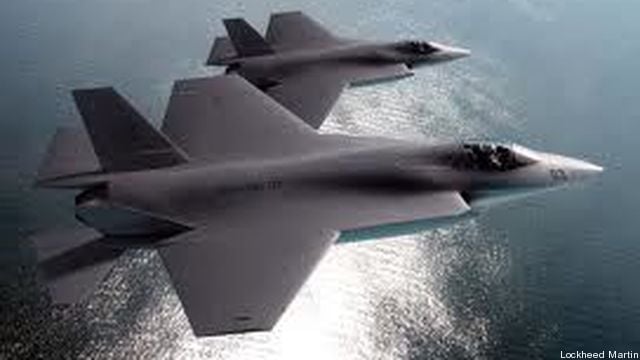F-35 Total Costs Soar to $1.5 Trillion; Lockheed Defends Program
Posted on

PENTAGON: Lockheed Martin scrambled today to explain the latest increases in the Joint Strike Fighter’s costs, arguing that the three versions of the aircraft “will be comparable to or lower than that of the seven” older airplanes it will replace. Overall, the F-35 will cost an appreciably impressive $1.5 trillion over the 55 years it is expected to be flying, up from an estimated $1 trillion.
The latest numbers were released this afternoon as part of the Pentagon’s authoritative Selected Acquisition Report. The overall value of the program comes from a Lockheed Martin statement.
For perspective on just how much money is involved, the latest Government Accountability Office’s survey of major defense program says the estimated cost of the Pentagon’s 96 major defense acquisition programs is $1.58 trillion. The “total acquisition cost” of these programs has grown by 5 percent to $74.4 billion. GAO says “about $31.1 billion can be attributed to factors such as inefficiencies in production, $29.6 billion to quantity changes, and $13.7 billion to research and development cost growth. As GAO puts it, these costs are “dominated by a small number of programs, with the Joint Strike Fighter accounting for the most cost growth in the last year, and the largest projected future funding needs.”
The costs of the F-35 aircraft itself rose $10.7 billion; Pratt & Whitneys F135 engines that power the plane are treated separately and their costs rose $5.6 billion.
Lockheed issued a statement noting that the cost projections “are based on a number of variables that are subject to considerable fluctuation over the next 55 years, making the estimate inherently imprecise.” Also, Lockheed notes the Pentagon has never before tried to project the costs of an aircraft over such a long stretch. And the Pentagon added “several new costs and program adjustments” that had not been part of earlier SARs.
“For example, the 2010 SAR estimate projected only operations and support costs, while the 2011 SAR projection adds the cost of acquisition and development. This results in the appearance of cost growth year over year,” Lockheed argues. “The DOD’s decision to shift the delivery of 179 aircraft beyond 2020 also added cost growth. This shift caused a $60 billion increase in operations and support costs due to inflation and the two-year program extension. The SAR estimate also added four squadrons, grew staffing requirements and increased scope. For example, the 2011 estimate added 2,650 personnel for maintenance and security for the U.S. Air Force at an additional cost of $24.3 billion. The government also included the cost of lifetime modernization to the aircraft to improve its capabilities – expenses that are not included in the cost projections for other aircraft.”
Frank Kendall, the presumptive undersecretrary of defense for acquisition, technology and logistics, told the Senate Armed Services Committee yesterday that he had come up with affordability targets to drive Lockheed Martin to save costs. We obtained a copy of the F-35 SAR talking points and they include those targets for both production and for sustainment. These numbers are for unit recurring flyaway cost. (This is the cost to buy a plane, not to operate it. It also usually doesn’t include all development costs.)
We lay them out for each of the three models.
Production
F-35A = $83.4 million
F-35B = $108.1 million
F-35C = $93.3 million
Cost Per Flying Hour
F-35A = $35,200
F-35B = $38,400
F-35C = $36,300
The F-35 was not alone in getting more expensive. The next generation aircraft carriers (CVN) increased 5.5 percent or $2.2 billion “due primarily to the application of revised escalation indices (+$951.0 million) and revised estimates for CVN-78 non-recurring engineering, Dual Band Radar, and construction performance variance (+$811.0 million). For the second carrier, CVN-79, “higher estimates for non-recurring engineering, basic construction and Government Furnished Equipment (GFE), overhead and industrial base impacts, and inflation” pushed the costs up $1.2 billion.
The ignoble award of highest percentage increase for a program (one not changed much by quantity changes) goes to the Multifunctional Information Distribution System (MIDS). Program costs rose 13.1 percent to hit a nice and juicy $3 billion.
Subscribe to our newsletter
Promotions, new products and sales. Directly to your inbox.
